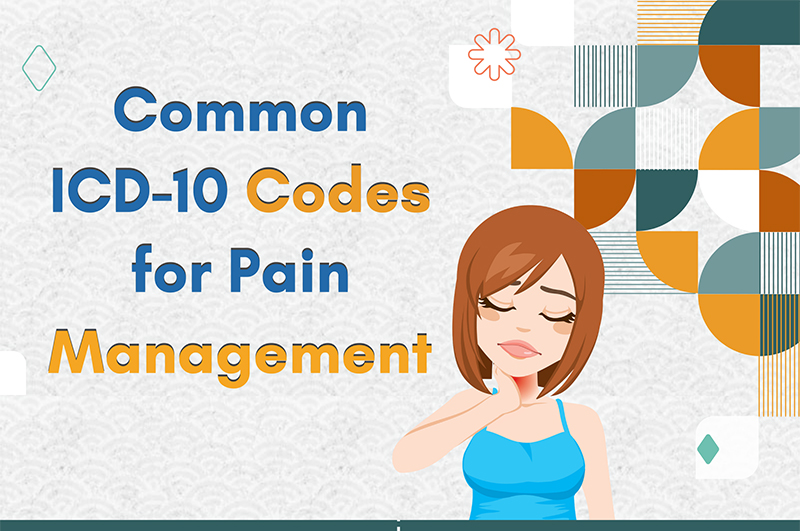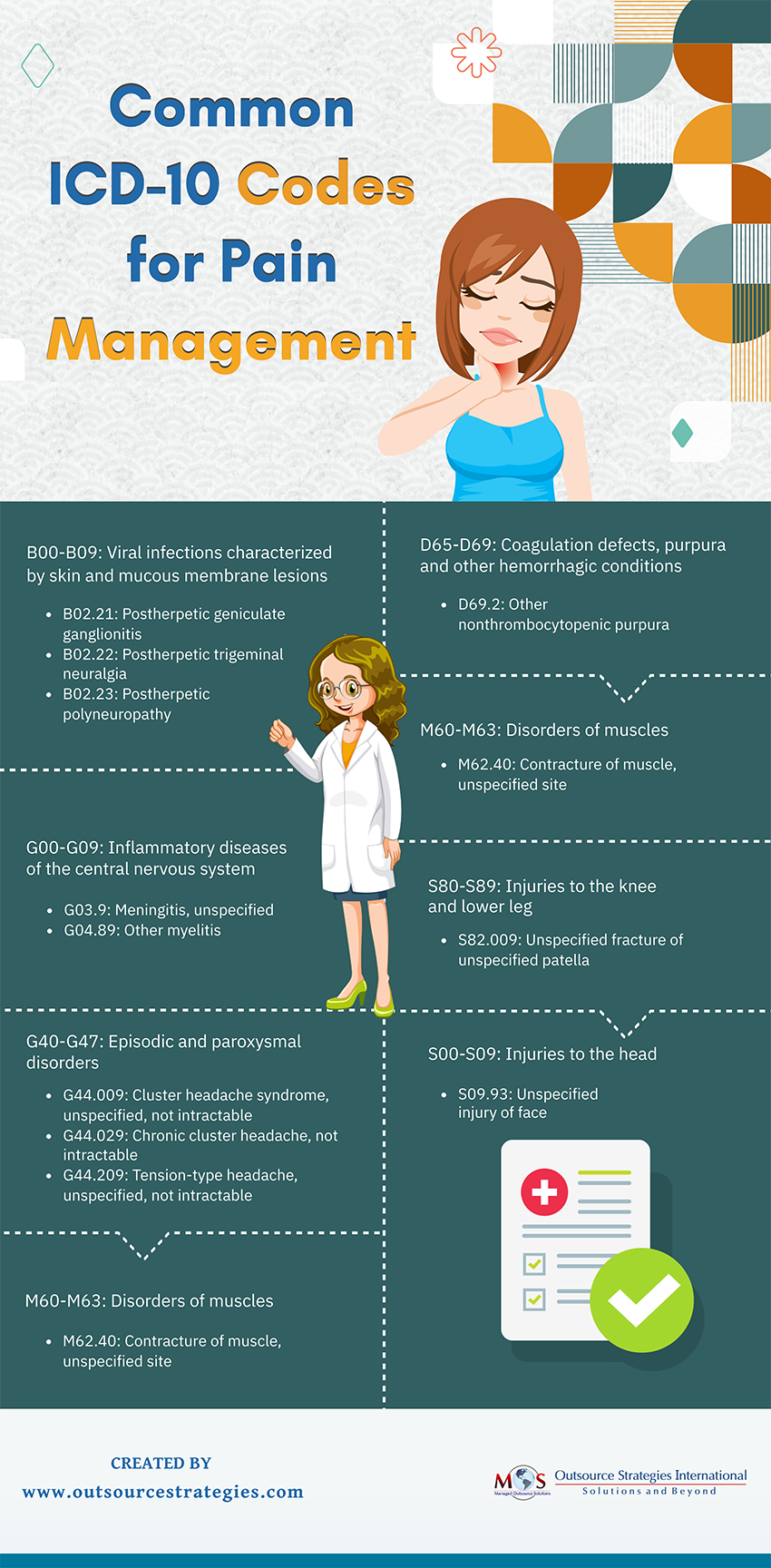Proper medical billing and coding is crucial for practices to get timely reimbursement, prevent denials and audits, and maintain cash flow. With the introduction of new pain management techniques, the complexity of pain management billing and coding is increasing. Payers and regulators are keeping a closer watch on the procedures adopted to treat chronic pain. Medical practices can efficiently manage their revenue cycle processes with the dedicated support from a pain management medical billing company.
Best practices to assign ICD-10 codes for pain management include: giving detailed diagnosis descriptions, maintaining appropriate documentation of injections administered, knowing the modifiers used in pain management, accurate reporting of codes, and staying updated with payer policies and guidelines. Modifiers are used to clarify the procedure adopted for pain management. Some modifiers commonly used in pain management are: -LT (anatomically left-RT, anatomically right), -50 (bilateral), -59 (notes that a service or procedure is independent and separate from other services that were performed on that same day), -52 (incomplete procedure, stopping part of the procedure due to reasons other than patient well-being), and -53 (incomplete procedure, the physician chooses to end a procedure for the patient’s well-being). It is very important for providers to make their diagnosis descriptions as clear as possible and ensure that the cause, the site and laterality of the pain are included in the diagnosis note, in addition to the mentioning of the condition.
Pain medicine specialists have to ensure that facet joint injections and nerve blocks are accurately documented. Also, each patient visit has to be recorded in the original operative note or an addendum. Wrong details can delay the processing of the claims and might interfere with reimbursement. Outsourcing pain management medical billing services can help medical practitioners to focus on patient care. The benefits of outsourcing also include lower claim denials and comprehensive and accurate coding.
Check out the infographic below





